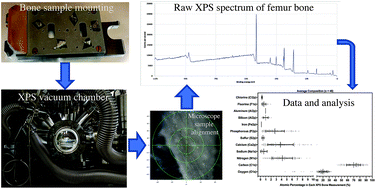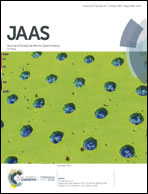Application of X-ray photoelectron spectroscopy to examine surface chemistry of cancellous bone and medullary contents to refine bone sample selection for nuclear DNA analysis
Abstract
The optimum skeletal element and bone tissue type to select for maximum nuclear DNA yield has been recently investigated. We employed X-ray photoelectron spectroscopy (XPS) to evaluate the elemental composition (atomic percentage) of cancellous and cortical bone tissue types to: (1) evaluate the use of XPS for surface chemistry analysis of cancellous bone tissue/medullary contents as a novel approach to discriminate biological tissues from diagenetic infiltrations (e.g., soil) among trabeculae, and (2) present the methodology as a potential tool for refining bone sample selection for nuclear DNA analysis. XPS data from modern bone specimens (n = 46) confirmed that cortical-dominant bones contained higher elemental composition of oxygen (p = 0.012), calcium (p < 0.0001), and phosphorous (p < 0.0001) and lower amounts of carbon (p < 0.0001) relative to cancellous-dominant samples. Data were presented as a ratio of carbon to calcium + phosphorus, revealing higher carbon content and lower calcium/phosphorus in cancellous- versus cortical-dominant bones (ratios of 20.0 ± 11.3 and 8.6 ± 5.6, respectively (p < 0.0001)). Results indicated that primarily cancellous bones contain higher amounts of soft tissue which explains their yielding higher-quality nuclear DNA. We further hypothesized that aluminum is a suitable elemental marker for soil infiltration. One buried donor had visibly soil-stained bones, with a cuneiform exhibiting detectable aluminum content (1.0% versus ∼3.8% in a location-matched soil control). Our results shed new light on the relationship between nuclear DNA yield and cancellous bone/medullary contents, thus informing bone-sample selection for nuclear DNA analysis in forensic contexts.



 Please wait while we load your content...
Please wait while we load your content...